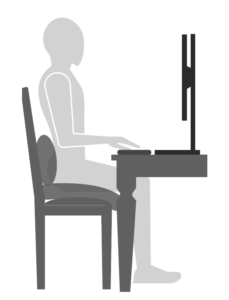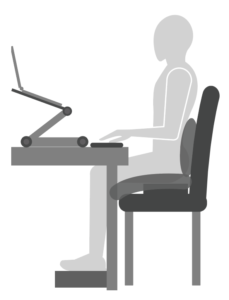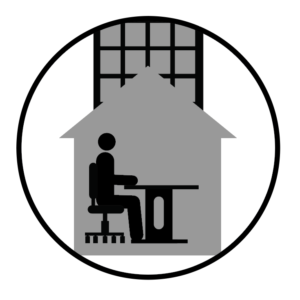Section 8
REMOTE (MOBILE) WORKSTATION SETUP
While working remotely, or utilizing a mobile workstation, the following should be considered:
Work Area
• Choose a dedicated workspace where an office desk environment can be replicated as closely as possible.
• Select a work area that is private, quiet, and preferably away from areas of high traffic flow.
• Ensure the work area has sufficient lighting.
(See Additional Considerations – Lighting).
• Adequate power supply should be available for all required equipment.
Work Surface
• Should be solid enough to support all of the equipment and materials the user requires.
(See Work Surfaces – Workstation Configurations).
• An acceptable remote work surface may be a desk, table, counter top (as long as it fits the desired requirements), workbench, etc.
• Should be positioned in order to utilize the available light source optimally
(See Additional Considerations – Lighting).
Chair
• A fully adjustable office chair should be utilized if possible
(See Chairs).
• If a fully adjustable office chair is not available, try a variety of chairs or sitting devices to see which one fits best.
• Be sure the chair has a stable base and a backrest.
• The height of the chair should attempt to place the elbows at or slightly above the work surface while maintaining a neutral sitting posture.
• If the chair fit deviates substantially in depth, height, width, or overall size from that required by the user, the chair fit should be modified by using external materials:
– If the chair height is too high, the user should utilize a footrest (or a modified footrest such as a box or crate) to obtain neutral sitting postures.
(See External Equipment and Accessories – Footrests).
– If the seat pan is too large, placing soft cushioned materials (such as pillows, towels, etc.) between the user and the backrest will bring the user forward.
Computer, Monitor, and External Equipment
Remote (mobile) workstations generally involve the use of either a laptop computer, a cellular telephone, or a tablet.
These devices should be utilized with additional external equipment (monitor, keyboard, mouse, etc.) as often as possible.
(See External Equipment and Accessories and Technology: Laptops, Mobile Telephones, and Tablets).
Remote Work Additional Considerations
Work while standing or moving periodically if possible.
(See Sit / Stand Workstations and Additional Considerations).
Take additional “movement” breaks every 20-30 minutes.
(See Additional Considerations – Postural Variation and Movement).
Navigate to other sections of this Reference Guide using the links below:



